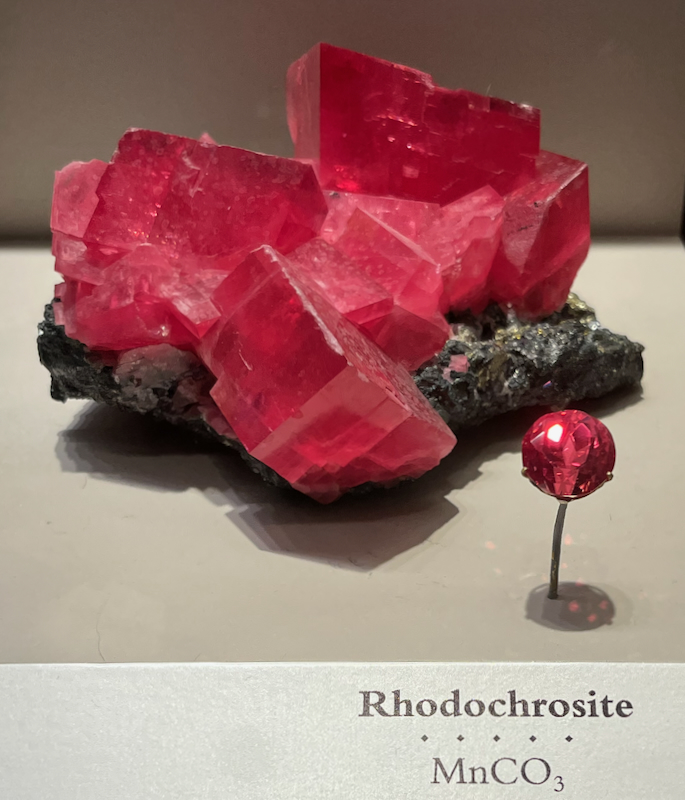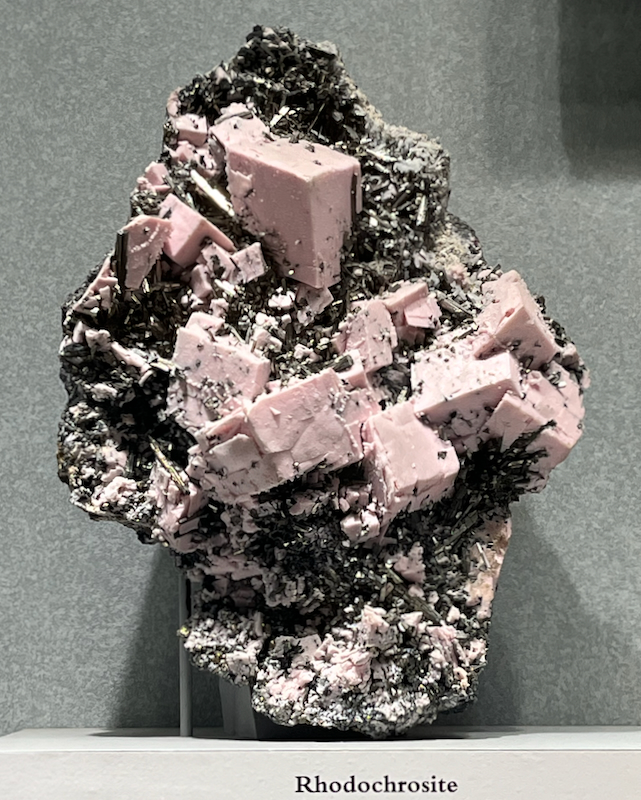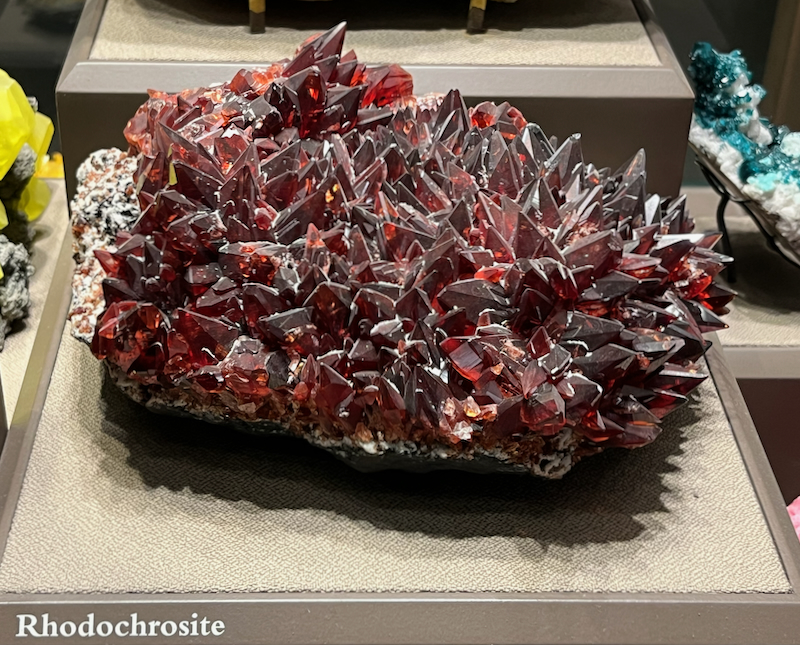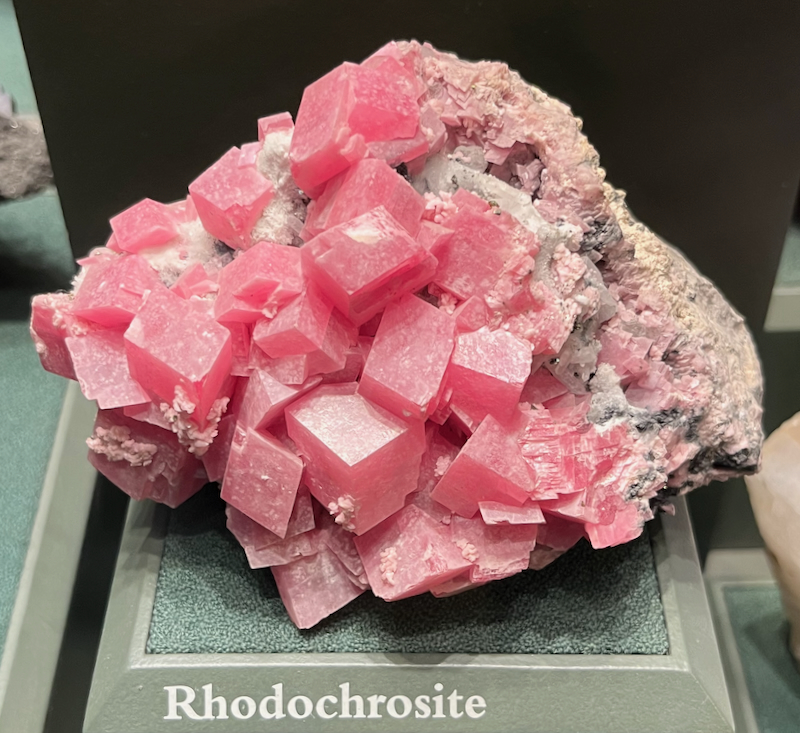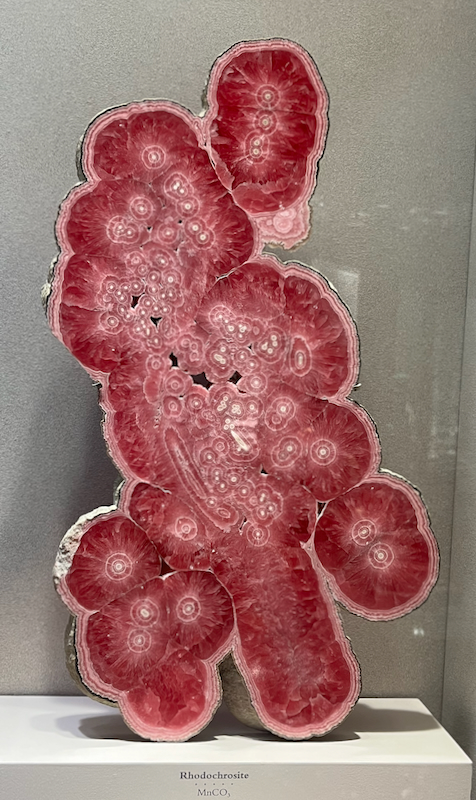Rhodochrosite
Rhodochrosite got its name in 1813. The “rhodo” part of its name comes from the Greek word for “rose” and the “chrosite” part just means “coloring,” so you can guess that it’s almost always red, or at least pink. Rhodochrosite can form impressive single crystals or clusters of crystals, but it can also be found in some stalactites or stalagmites in caves, and if you slice them, the slices show concentric circles (different sized circles with the same center) of several different shades of red to pink to white. Rhodochrosite’s formula, MnCO3, can tell you a few things. Mn stands for manganese, and that element often causes minerals to be red, pink, or purple. The CO3 part means that it’s a “carbonate” (carbon (C) and oxygen (O)), just like calcite (CaCO3) is, and like calcite it can dissolve in natural acid, which is why you can find it in cave formations that are normally mostly calcite. Being a carbonate, rhodochrosite is also pretty soft, so you won’t see a lot of rhodochrosite jewelry, but it makes for beautiful specimens on your rock shelf.
| Formula | Group or Type | Shape | Hardness | Specific Gravity | Streak | Luster |
|---|---|---|---|---|---|---|
| Mn(CO3) | — | Hexagonal | 3.5–4 | 3.3–3.6 | White | Vitreous to pearly |

